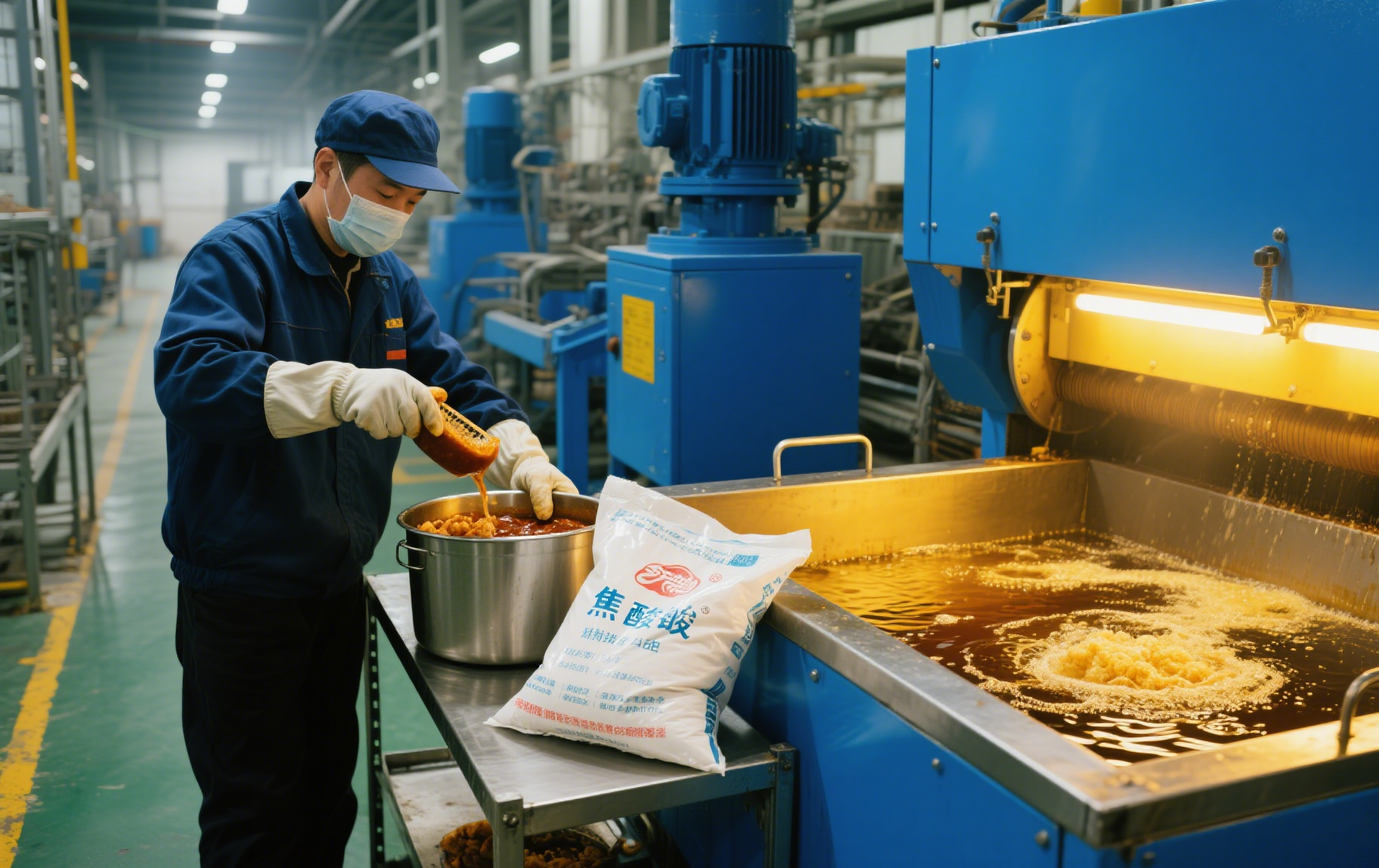Exploring the Functional Value of Tetrasodium Pyrophosphate in Food Processing
Tetrasodium pyrophosphate plays a critical role in the food industry as a versatile and highly functional additive. This compound serves multiple purposes in food processing, from stabilizing texture and improving color retention to enhancing the shelf life and water-holding capacity of products. Found commonly in processed meats, seafood, baked goods, and dairy products, tetrasodium pyrophosphate helps manufacturers maintain consistency, safety, and quality in mass food production. Its ability to act as a chelating agent, emulsifier, and pH stabilizer has made it indispensable across a wide range of applications. As consumer preferences shift toward cleaner labels and higher-quality products, understanding how tetrasodium pyrophosphate supports these demands becomes essential for food technologists and product developers alike.
Key Functionalities of Tetrasodium Pyrophosphate in Food Applications
Chelating Properties that Prevent Discoloration and Oxidation
One of the most important functions of tetrasodium pyrophosphate in food additives is its ability to act as a chelating agent. In this role, it binds with metal ions such as iron and copper, which are naturally present in many ingredients and can catalyze oxidation reactions. By neutralizing these ions, tetrasodium pyrophosphate helps prevent undesirable changes in flavor, color, and nutritional content that often occur during storage or processing. This is particularly critical in seafood and canned vegetables, where oxidation can lead to off-flavors and discoloration. Its presence ensures that the end product maintains visual appeal and taste integrity, which are key factors in consumer satisfaction and brand reputation.
Buffering and pH Control for Food Stability
Maintaining the right pH level is crucial in processed foods, as it directly influences microbial stability, texture, flavor, and chemical reactions. Tetrasodium pyrophosphate is highly effective as a buffering agent, capable of adjusting and stabilizing pH within desirable ranges for various food products. In processed cheese and dairy spreads, it helps create a smooth and uniform texture by stabilizing casein proteins. In meat products, it ensures that the environment remains conducive to moisture retention and microbial control. Through precise pH management, manufacturers can fine-tune product characteristics, extend shelf life, and ensure compliance with food safety standards.

Role of Tetrasodium Pyrophosphate in Meat and Seafood Processing
Enhancing Water Retention and Texture in Meats
Tetrasodium pyrophosphate is commonly added to processed meats such as ham, sausages, and deli slices to improve water retention and tenderness. Its unique chemical structure interacts with muscle proteins, causing them to unfold and bind more water. This results in a juicier, more palatable product that not only tastes better but also yields higher weights during cooking. For manufacturers, this translates to reduced shrinkage and improved product consistency. The compound also helps prevent the separation of fats and liquids, maintaining the structural integrity and appealing appearance of the meat product from packaging to plate.
Reducing Drip Loss and Oxidation in Seafood
Seafood, particularly frozen fish and shrimp, benefits significantly from the inclusion of tetrasodium pyrophosphate. It plays a dual role in preserving both moisture and color by stabilizing cellular structures and reducing oxidative processes. When used in glazing solutions or as a pre-treatment before freezing, tetrasodium pyrophosphate reduces drip loss during thawing, which means the product retains more of its original weight and quality. Additionally, it prevents enzymatic browning and other reactions that would otherwise compromise the product’s visual appeal. These advantages are particularly important in export and long-distance distribution, where maintaining freshness is critical to market success.
Applications in Baked Goods and Convenience Foods
Improving Dough Handling and Consistency
In baked goods, tetrasodium pyrophosphate is frequently used in combination with leavening agents to create balanced chemical reactions that result in desirable volume and texture. When paired with baking soda, it helps regulate the timing and intensity of carbon dioxide release, ensuring even expansion during baking. This precise control leads to lighter, more uniform products such as cakes, muffins, and pancakes. Beyond leavening, tetrasodium pyrophosphate contributes to dough consistency and elasticity, making it easier to handle in automated mixing and shaping equipment. This is especially valuable in large-scale production lines, where minor formulation inconsistencies can lead to significant waste or quality issues.
Stabilizing Ready-to-Eat and Instant Meals
In convenience foods like ready-to-eat meals, frozen dinners, and instant soups, tetrasodium pyrophosphate acts as a stabilizer and emulsifier that keeps components like sauces, proteins, and vegetables in an even suspension. It prevents phase separation, curdling, or clumping during freezing, reheating, or shelf storage. As a result, consumers enjoy products that look and taste freshly prepared even after extended storage. Furthermore, its compatibility with other food-grade emulsifiers and stabilizers allows for complex formulation strategies tailored to specific cooking and storage conditions. This versatility is key to maintaining product integrity in an increasingly competitive and innovation-driven food market.
Enhancing Quality and Safety in Dairy Products
Controlling Mineral Balance in Processed Cheese
Processed cheeses are among the most technically demanding products in the dairy category, requiring careful control of texture, meltability, and taste. Tetrasodium pyrophosphate is vital in achieving these attributes by chelating calcium ions and maintaining optimal mineral balance. This action helps disperse casein micelles uniformly, resulting in smooth, homogeneous cheese with consistent melt characteristics. Whether used in slices, spreads, or sauces, the compound allows for precision customization of texture and flavor profiles to meet diverse consumer preferences. Additionally, it enhances microbial stability by creating less favorable conditions for spoilage organisms, extending shelf life in both refrigerated and ambient storage.
Supporting Fortification and Nutrient Stability
In fortified dairy beverages and supplements, tetrasodium pyrophosphate assists in stabilizing added nutrients such as calcium, iron, or magnesium, which might otherwise precipitate or degrade during storage. Its chelating capacity ensures these minerals remain soluble and bioavailable, improving the nutritional quality of the product without compromising clarity, flavor, or shelf stability. This function is especially valuable in products aimed at health-conscious consumers, children, or older adults, where consistency and nutrient delivery are paramount. By ensuring nutrient stability, tetrasodium pyrophosphate supports the growing trend toward functional and enriched dairy-based food and beverage solutions.
Addressing Consumer and Regulatory Considerations
Clean Label Trends and Formulation Transparency
As consumer awareness of food ingredients grows, manufacturers face increasing pressure to simplify ingredient lists while maintaining product performance. While tetrasodium pyrophosphate may be perceived as synthetic, its effectiveness means that lower overall quantities are needed compared to alternative additives. This allows manufacturers to meet both regulatory and consumer expectations by reducing total additive load. Additionally, clear labeling and communication around its function—such as "to retain moisture" or "to stabilize color"—can help improve consumer acceptance. Forward-thinking brands are incorporating educational messaging and transparent sourcing to reinforce trust and align with clean-label values without compromising product quality.
Regional Regulations and Safe Usage Levels
Tetrasodium pyrophosphate is approved for use as a food additive by major regulatory bodies, including the FDA and EFSA, with strict limits on usage levels depending on the application. Its inclusion in food is governed by Good Manufacturing Practices (GMP), ensuring that it remains safe for consumption within prescribed limits. Food manufacturers must remain aware of evolving global regulations that may impact labeling, permissible usage, or required documentation. Ongoing toxicological research supports its safe use in approved concentrations, and proper formulation techniques ensure that its inclusion enhances product quality without posing health risks. Responsible sourcing and accurate ingredient declaration further contribute to regulatory compliance and consumer safety.
Opportunities for Innovation Using Tetrasodium Pyrophosphate
Tailored Solutions for Specialized Diets
As the food industry evolves to accommodate specialized diets such as low-sodium, vegan, and allergen-free, tetrasodium pyrophosphate offers significant formulation flexibility. In meat alternatives and plant-based dairy, it can help replicate the mouthfeel and stability traditionally achieved through animal-based ingredients. Its ability to bind water and maintain emulsions makes it ideal for recreating the juiciness and cohesiveness of real meat or the creaminess of traditional dairy. Through precise control of pH and texture, food technologists can deliver high-quality alternatives that meet modern dietary expectations. These capabilities open new avenues for product innovation in fast-growing segments of the market.
Combining Functionality with Sustainability
Manufacturers looking to reduce food waste and increase shelf life can leverage tetrasodium pyrophosphate as part of a holistic formulation strategy. Its role in preserving appearance, flavor, and texture reduces the likelihood of consumer rejection or product spoilage, which directly contributes to sustainability goals. Additionally, its use in concentrated and multifunctional forms allows for lower environmental impact during production, packaging, and distribution. As more companies adopt sustainable practices, tetrasodium pyrophosphate will remain relevant by enabling high-quality products with minimal waste and resource input. These advantages position it as a forward-compatible additive in an industry focused on both efficiency and environmental responsibility.
FAQ
What is the primary purpose of tetrasodium pyrophosphate in food?
Tetrasodium pyrophosphate acts as a multifunctional additive that stabilizes pH, binds metal ions to prevent oxidation, and improves texture, moisture retention, and shelf life across a wide range of food products.
Is tetrasodium pyrophosphate safe for regular consumption?
Yes, tetrasodium pyrophosphate is approved by major food safety authorities like the FDA and EFSA for use in regulated amounts. When used according to guidelines, it poses no known health risks and supports food quality and stability.
How does tetrasodium pyrophosphate improve the quality of processed meats?
In processed meats, it enhances water retention, prevents fat separation, and improves tenderness and texture, helping maintain product consistency and juiciness during cooking and storage.
Can tetrasodium pyrophosphate be used in plant-based or vegan foods?
Yes, its versatility makes it suitable for vegan and plant-based formulations, where it helps replicate the texture, moisture content, and stability of traditional meat and dairy products without using animal-derived ingredients.
Table of Contents
- Exploring the Functional Value of Tetrasodium Pyrophosphate in Food Processing
- Key Functionalities of Tetrasodium Pyrophosphate in Food Applications
- Role of Tetrasodium Pyrophosphate in Meat and Seafood Processing
- Applications in Baked Goods and Convenience Foods
- Enhancing Quality and Safety in Dairy Products
- Addressing Consumer and Regulatory Considerations
- Opportunities for Innovation Using Tetrasodium Pyrophosphate
- FAQ

